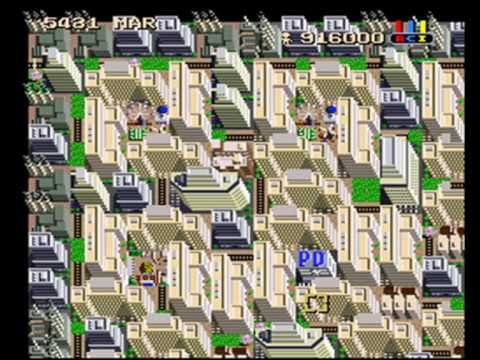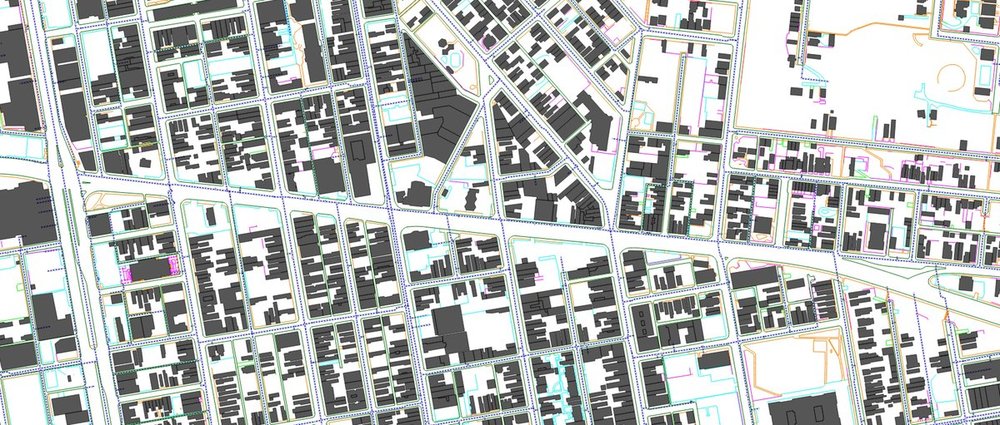Everything posted by jjakucyk
-
Cincinnati: Oakley: Development and News
277/480 volt (and various close permutations depending on wye vs delta transformers, etc.) is a very common commercial electric service. Volts don't really matter though, it's amps, and superchargers need a lot of amps. That's easier to deliver at higher voltage because it allows thinner wires.
-
Cincinnati: Over-the-Rhine: Development and News
"The Historic Conservation Board, established by ordinance in 1980, consists of seven (7) members who are appointed by the City Manager. The Board must include at least one professional historic preservationist, one historian, two architects, one attorney, one person engaged in the real estate or development business, and one economist." https://www.cincinnati-oh.gov/buildings/historic-conservation/historic-conservation-board/
-
Cincinnati: Over-the-Rhine: Development and News
The HCB takes over the responsibility of the zoning board in historic districts, so approvals don't need to go through multiple departments that may have conflicting priorities. It makes sense in the context of setbacks and height limits. The HCB would be more amenable to grant a variance for a project that's trying to adhere to the historic guidelines and adjacent building frontages, even if it doesn't fit the underlying zoning. Yes the HCB should be more flexible about density/parking/height, but I don't see any evidence to suggest that they're worse than the regular zoning board. Since the 15-unit density required a variance, that's why it was rolled into the overall historic review.
-
Cincinnati: Downtown: The Banks
If the luxury market is saturated, that makes lower-tier markets more attractive. That's part of the reason middle and even low-income housing could be built new in the past. Without zoning constraints creating scarcity across the board, builders could focus on their own particular strengths and niches, which could be apartments, tenements, row houses, etc., rather than chasing the luxury market.
-
Cincinnati: Pendleton: Development and News
- Amtrak & Federal: Passenger Rail News
If true that would be a step in the right direction, but it's possible that those taxes may be assessed at the state level rather than local or county to try to simplify the administration of it, in much the same way as other utilities. That usually means they're classified as "centrally assessed" properties or companies. Nebraska for instance created a special type of railroad "personal property" to get around restrictions on levying taxes on "real property." Idaho uses the term "operating property." Of course it would certainly vary state by state in many other ways, but I haven't heard anything to suggest the tax burden of improving their infrastructure has been lifted. It's little different than the way most property taxes are levied, on land and improvements, with the improvements making up the overwhelming majority of the assessment. Thus it penalizes improvements, upgrades, and expansion, while rewarding depreciation, neglect, and abandonment. Anyway, here's a couple articles from the past few years about various taxation issues: https://www.mprnews.org/story/2015/02/10/railroad-taxes https://www.platteinstitute.org/research/detail/this-time-its-personal-nebraskas-personal-property-tax https://tax.idaho.gov/i-1167.cfm https://poststar.com/news/local/county-hit-with-unexpected-railroad-tax-bill/article_38679450-87c2-51ed-b2b0-d19f7daecd21.html https://www.lincolninst.edu/publications/conference-papers/unit-approach-taxation-railroad-public-utility-property- Amtrak & Federal: Passenger Rail News
Don't forget property taxes railroads have to pay for their physical plant, which all other modes of travel don't have.- Cincinnati: I-71 Improvements / Uptown Access Project (MLK Interchange)
- Cincinnati: Pendleton: Development and News
But I don't like beer ? The new ice cream place at 13th and Broadway is nice though.- Cincinnati Streetcar / The Connector News
We've gone over it before, but the political situation has been the driving factor in the streetcar's performance. It's easy to put in place a bad policy and just let the system flounder. It takes no additional work, whereas any fixes require at least some token level of effort. On the other hand, while streetcar ridership tends to drop some in cold weather, scooter ridership will likely crash once the weather really turns. Cold isn't going to help the batteries, and sloppy weather is pretty much untenable.- Cincinnati: Western Hills Viaduct
Is the Spring Grove Avenue connection being maintained? It could be that there's not enough room to make a wide single deck and also flare it out and ramp down to Spring Grove since it has to also stay pretty high to clear I-75 and intersect Central Parkway.- Cincinnati: Liberty Street Road Diet
According to the older CAGIS data I have (mid 1990s) there's a 10-inch water main under the north side of the street only, basically aligned with the original street.- Cincinnati: Fountain Square: Development and News
^ There are an awful lot of ramps and thus blank walls along 5th Street, and this is for a flat site. It's very "un-activated."- Cincinnati: Over-the-Rhine: Development and News
troeros mentioned it back on September 7. https://www.urbanohio.com/forum/index.php/topic,1114.msg936196.html#msg936196- Cincinnati: Over-the-Rhine: Development and News
Didn't they tell the designers of 1118 to go back to the drawing board? Did they do that, or did something happen behind the scenes? That particular area is zoned CC-P (Commercial Corridor Pedestrian Oriented) which has a height limit of 85 feet (and a height minimum of 15 feet). https://library.municode.com/oh/cincinnati/codes/code_of_ordinances?nodeId=TIXIZOCOCI_CH1409CODI- Cincinnati: Fountain Square: Development and News
I was going to post this last night but then the UO server went down. Fortunately I was able to save the text. A street wall defines space, and in the context of a plaza it creates an outdoor room by becoming the walls of that room. Blank monolithic walls like Kroger or Terrace Plaza are not the same thing in an environment like this. They still need windows, doors, activity, and a human scale to their components. This is basic urban planning and architecture. Adding more outdoor spaces...again let me reiterate...right next to one of the signature plazas in the country, dilutes and confuses Fountain Square. That's a big part of the reason why Hyde Park Square works and Oakley Square doesn't (yeah they're really not squares, they're esplanades, but let's not go down that rabbit hole). Oakley doesn't have the building frontage or the building height to properly enclose the space. Thus when you're in the square you don't feel like you're in a place, you feel like you're in the median of a highway. Hyde Park also has the benefit of a tree canopy that further divides the space in the square into something of a room within a room. If that exact same street and square existed but without the taller buildings flanking it, say replacing them with single-family homes surrounded by lawns, then it wouldn't be a place worth going to. It would be little different than Jack Casino's front "yard," Glendale's Floral or Van Cleve parks, Westwood's town hall triangle, or the Laurel "Recreation Area" on Ezzard Charles. An outdoor space for people, whether plaza, park, square, or garden, is diluted by empty undefined space surrounding it. On top of all that, multi-level plazas and parks with excessive understory (shrubs, tall ornamental grasses, etc.) repel usage because of all the hiding places for unsavory individuals. Even if there aren't any such people, the inability to see very far leads to uneasiness and fear. Thus people tend not to go to such places, further reinforcing their scary nature. They're also harder to keep clean. The best public spaces are level, or with just a couple of steps, and they're broadly open without many hiding places. Bravo to ResTark for making lots of places to sit and water to play with, but that already exists across the street. The real fraud is showing the Vine Street plaza bathed in sunlight, which it will only be first thing in the morning at certain times of the year. The rest of the day it will be a dark hole. Plus, the shape of the building looks like an aerofoil designed to funnel as much wind into Fountain Square as possible. If this were a couple blocks away, then I wouldn't mind it so much, but it's competing with Fountain Square rather than complimenting it. If they put this exact program on a two or three story podium with storefronts facing all the streets then it wouldn't be the downtown equivalent of a single-family home with a big yard next to a park. Their non-handicapped-accessible outdoor space would likely get just as much use being up there and not for public use than it will as designed, once the novelty wears off. Ok that's a bit hyperbolic but this has little appeal compared to Fountain Square itself. William H. Whyte's one hour video "The Social Life of Small Urban Spaces" is the definitive resource on this sort of thing. Unfortunately its copyright holders are meticulous in having any online copies of the video taken down, and it and the associated book are both fantastically expensive, costing hundreds of dollars. I do have a copy myself though, so maybe we can do a movie night sometime? The next best thing is Andres Duany's early 1990s San Antonio lecture which covers plazas along with a lot of other principles of new (and old) urbanism.- Cincinnati: Fountain Square: Development and News
Ugh, no conception of a street wall, just anti-urban starchitecture. They're facing one of the premier urban plazas in the country and they're proposing a blob building with wedge-shaped stairparks and skywalks. That is exactly the type of form that shouldn't be done in such a location.- Cincinnati: Walnut Hills / East Walnut Hills: Development and News
Demolitions haven't been as bad as they were maybe 10 years ago (especially McMillan near Stanton), but they're still happening. Several buildings went away around MLK/Gilbert because of the new interchange, and what's left is going down the toilet fast. That historic building at McMillan and Woodburn was torn down to build a parking lot. You can see some recent demos in Google Maps on Burdette, Myrtle, and Preston. Phillips Chapel at Park and Taft is now a vacant lot. It does seem like more of the neighborhood is succumbing to entropy than is being built back up, but there's some activity around the periphery (Madison & Cleinview condos, Woodburn & Lincoln, Windsor School).- Cincinnati: Housing Market / Affordable Housing
In a healthy market without all the zoning and NIMBY restrictions, it will be profitable to build mid-market housing, and possibly even low-end housing, since the market for luxury housing will quickly be saturated, driving down margins.- Cincinnati's "Hidden" Streets
Patrick Snadon.- Cincinnati's "Hidden" Streets
^Yup. I don't know what the reason was, or if Andy even knew himself.- Cincinnati's "Hidden" Streets
Avery Lane in Hyde Park next to the Cincinnati Observatory Center is an interesting beast. At the Observatory Place and St. Johns Place ends it's basically a driveway (including some step sidewalks), but in the middle it's just a sidewalk. I think one house has no driveway, while some others have access from Wellston. https://goo.gl/maps/FK3KVfcfcoy Closson Court in Ludlow is similar in that the street ends two houses from the next intersection, so two houses face a sidewalk only. https://goo.gl/maps/jmAYrBv88w72- Cincinnati: Over-the-Rhine: Development and News
^ Key phrases: will likely, eventually, intended to, could be- Cincinnati: Over-the-Rhine: Development and News
Hey guess what? When buildings in the core are torn down and replaced with parking lots, it's the rest of us who end up subsidizing that property owner. The streets, sidewalks, pipes, wires, lights, police, fire, schools, libraries...those don't go away when a building is demolished, but they still have to be operated and maintained. The property owner however has their taxes reduced to a pittance. So the burden of all that infrastructure and services falls on the rest of us to cover through our taxes and utility rates. So yeah, we have every right to be upset when projects get scaled down, canceled, or turned into vacant lots (which parking lots are too). Your self-righteousness is misplaced and ignorant.- Cincinnati: East End / Linwood / California: Development and News
^ Is it the site of this building that just vanished one day earlier this summer? https://goo.gl/maps/1UkvQwPUTeF2 That's the kind of "death by a thousand cuts" demolition that really hurts the city, along with the de-densification and upmarket pricing that comes with it. - Amtrak & Federal: Passenger Rail News







